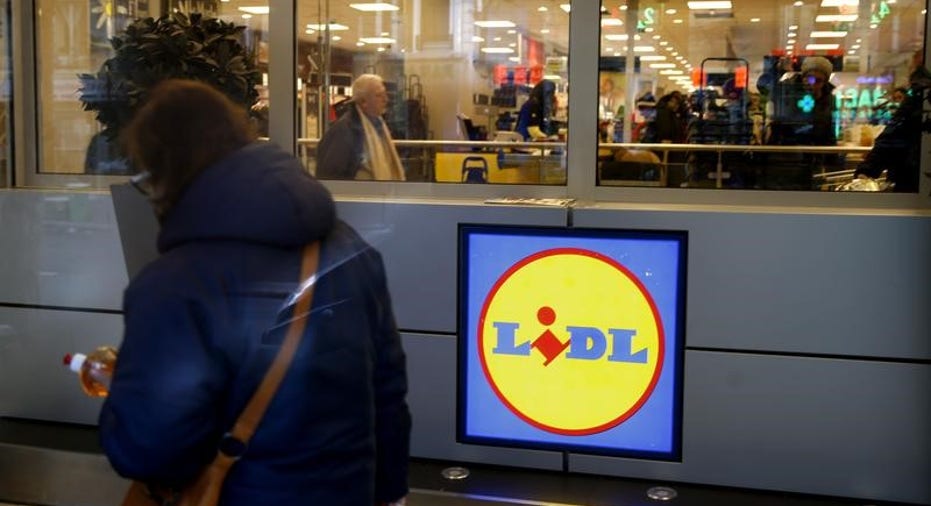Lidl Stores Gain Little Traction So Far in U.S.

Since opening its first U.S. store in June, Lidl, the German grocery giant, hasn't exactly upset the American grocery cart.
The deep-discount store chain plotted its U.S. entry for years, spotting an opening in a vast market that was served mainly by conventional supermarkets, price-cutters like Wal-Mart Stores, Inc. and Lidl's main German rival, Aldi. Lidl had been gaining market share across Europe with affordable products that have lured thrifty shoppers across a range of demographics.
When Lidl's first nine U.S. stores opened June 15 in Virginia and the Carolinas, they lured customers away from other grocers, according to a store-traffic analysis by inMarket, a location-based data firm.
But Lidl hasn't been able to sustain that level of traffic, and major grocers including Kroger Co. and Wal-Mart have recovered much of their lost market share, according to inMarket.
"This is designed for us to learn and adapt and be nimble," said Will Harwood, a Lidl spokesman based at the company's U.S. headquarters in Arlington, Va. "It's not about whether our model works in a market, but what we do to adapt to that market."
In June, Lidl was drawing 11% of consumer visits to traditional grocers in nine markets in Virginia, North Carolina and South Carolina, according to data that inMarket shared with The Wall Street Journal. By August, Lidl's share of that traffic fell below 8%.
"With the quick falloff, I'd be concerned if I was them," said Cameron Peebles, chief marketing officer at inMarket.
Lidl's share of grocery visits declined in that period even as it was opening more stores in those states. Lidl has opened 37 stores in five states and plans to operate up to 100 in total, from New Jersey to Georgia, by next summer.
When more-diversified food sellers like Wal-Mart and Target Corp. are included, inMarket says Lidl's share of shopping trips in those states peaked at nearly 3% in June before falling in July and August. Lidl recovered some traffic in September, reaching 2% of the market.
Executives at Wal-Mart, Kroger and other food sellers have been bracing for years for the German discounter's arrival. Both Lidl and Aldi have disrupted Europe's supermarket sector by offering limited selections of inexpensive store-brand goods in small, easy-to-shop stores.
The timing of Lidl's U.S. arrival wasn't ideal. It opened its first stores the day before Amazon.com Inc. surprised the industry by announcing it would buy Whole Foods Market. Supermarkets responded, slashing prices to keep up with growing competition on many fronts while investing in online ordering and delivery. Lidl doesn't currently have an online grocery-shopping operation in the U.S.
Retail analysts say that it will take several more months to prove whether Lidl is catching on in the U.S. "It takes time for people's shopping behavior to adapt and get into a new routine, particularly something that is routinized as shopping," said Kent Knudson, a partner at Bain & Co.
Lidl has made good on its discount strategy. Prices in a basket of select goods at new Lidl stores were as much as 39% lower than at stores of competitors such as North Carolina-based Food Lion and Wal-Mart in Virginia and North Carolina, according to the Hartman Group, a food research firm.
In some locations, Lidl seems to have touched off a price war. In recent months, Lidl shoppers found eggs selling for 55 cents a dozen at Lidl stores, with nearby Aldi outlets then selling them for 26 cents a dozen.
"I was getting three dozen a week," said Tarah Jeffery, a 38-year-old mother of two from Haymarket, Va., and a new Lidl shopper. "You could see the changes when Lidl was coming."
Missteps in store location and merchandise have hurt Lidl's U.S. rollout, consumer analysts say. In one 15-minute period recently, Christopher Mandeville, a senior analyst for Jefferies & Co., counted only two shoppers entering a Lidl store tucked behind a strip mall in Richmond, Va., with nine other grocery stores including Aldi, Wal-Mart, Kroger and Trader Joe's located close by, he said.
"It was completely crickets," he said.
Other analysts said Lidl stores give prominent display to items that seem geared toward Europeans, whether it is $39.99 cycling shoes or $15.99 badminton sets. Some stores' produce sections have run low on conventional items while stocking big organic offerings, and in some stores emphasis on wine hasn't squared with local tastes focused on beer, said Ali Dibadji, senior analyst for the Sanford C. Bernstein & Co. brokerage.
"This format will not be successful," Mr. Dibadji said. "They need to reset."
Lidl's Mr. Harwood said the retailer is studying which products sell well in the U.S. and considers competitors' efforts to match its prices a sign of success.
Bain's Mr. Knudson said he expects Lidl will eventually succeed because its strategy is in line with U.S. consumers' drift toward cheaper private-label products.
Bain projects food retailing's deep-discount segment will grow by at least 8% a year through 2020, five times the rate of traditional grocers. Aldi plans to spend $5 billion in the U.S. over the next five years opening nearly 900 stores and remodel hundreds more.
Lidl's U.S. stores are larger and more elaborate than its European outlets and feature bakeries and fresh flowers. The retailer worked to cultivate buzz through promotions, such as the launch in June of a clothing line designed by German-born model Heidi Klum.
Many shoppers said they appreciate the simple product offerings and low prices. "It's so nice to be able to buy tasty treats like doughnuts and bagels at their prices," said Melanie Werner, a 22-year-old from Gainesville, Va., who has loaded up her cart at Lidl a few times since its recent opening. "I am officially a converted Lidl shopper."
Write to Heather Haddon at heather.haddon@wsj.com
(END) Dow Jones Newswires
October 08, 2017 07:14 ET (11:14 GMT)